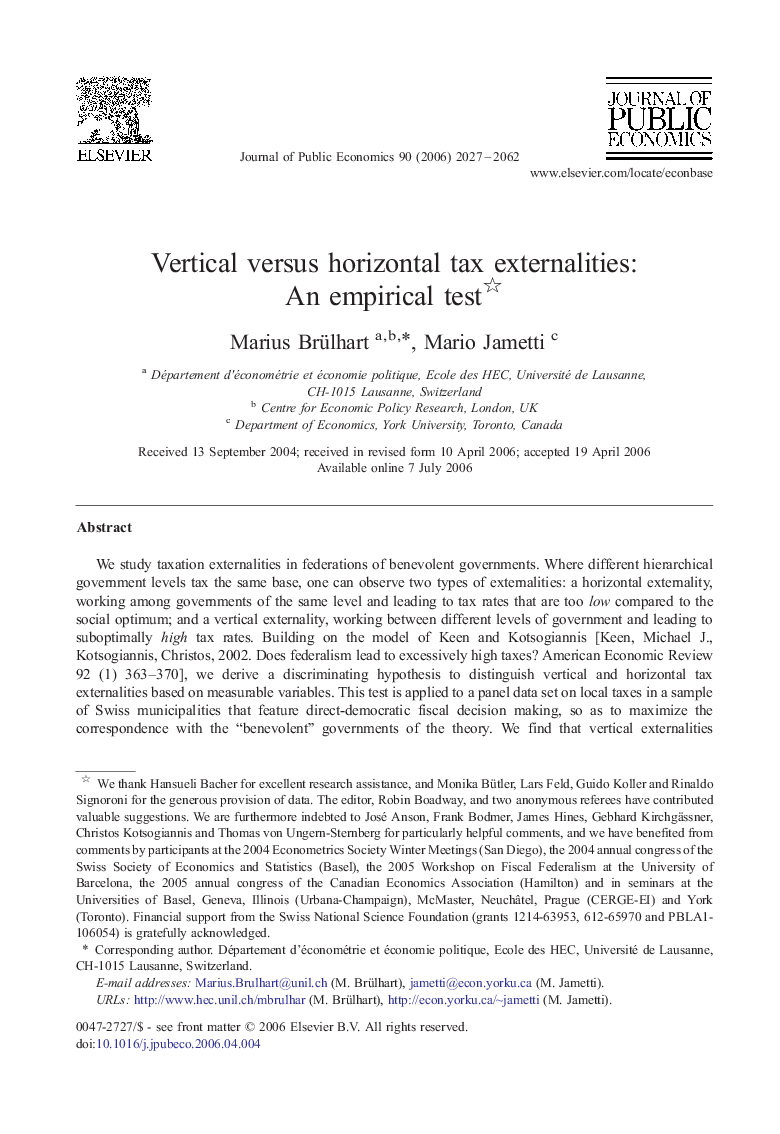| Article ID | Journal | Published Year | Pages | File Type |
|---|---|---|---|---|
| 970372 | Journal of Public Economics | 2006 | 36 Pages |
We study taxation externalities in federations of benevolent governments. Where different hierarchical government levels tax the same base, one can observe two types of externalities: a horizontal externality, working among governments of the same level and leading to tax rates that are too low compared to the social optimum; and a vertical externality, working between different levels of government and leading to suboptimally high tax rates. Building on the model of Keen and Kotsogiannis [Keen, Michael J., Kotsogiannis, Christos, 2002. Does federalism lead to excessively high taxes? American Economic Review 92 (1) 363–370], we derive a discriminating hypothesis to distinguish vertical and horizontal tax externalities based on measurable variables. This test is applied to a panel data set on local taxes in a sample of Swiss municipalities that feature direct-democratic fiscal decision making, so as to maximize the correspondence with the “benevolent” governments of the theory. We find that vertical externalities dominate – they are thus an observed empirical phenomenon as well as a notable extension to the theory of tax competition.
